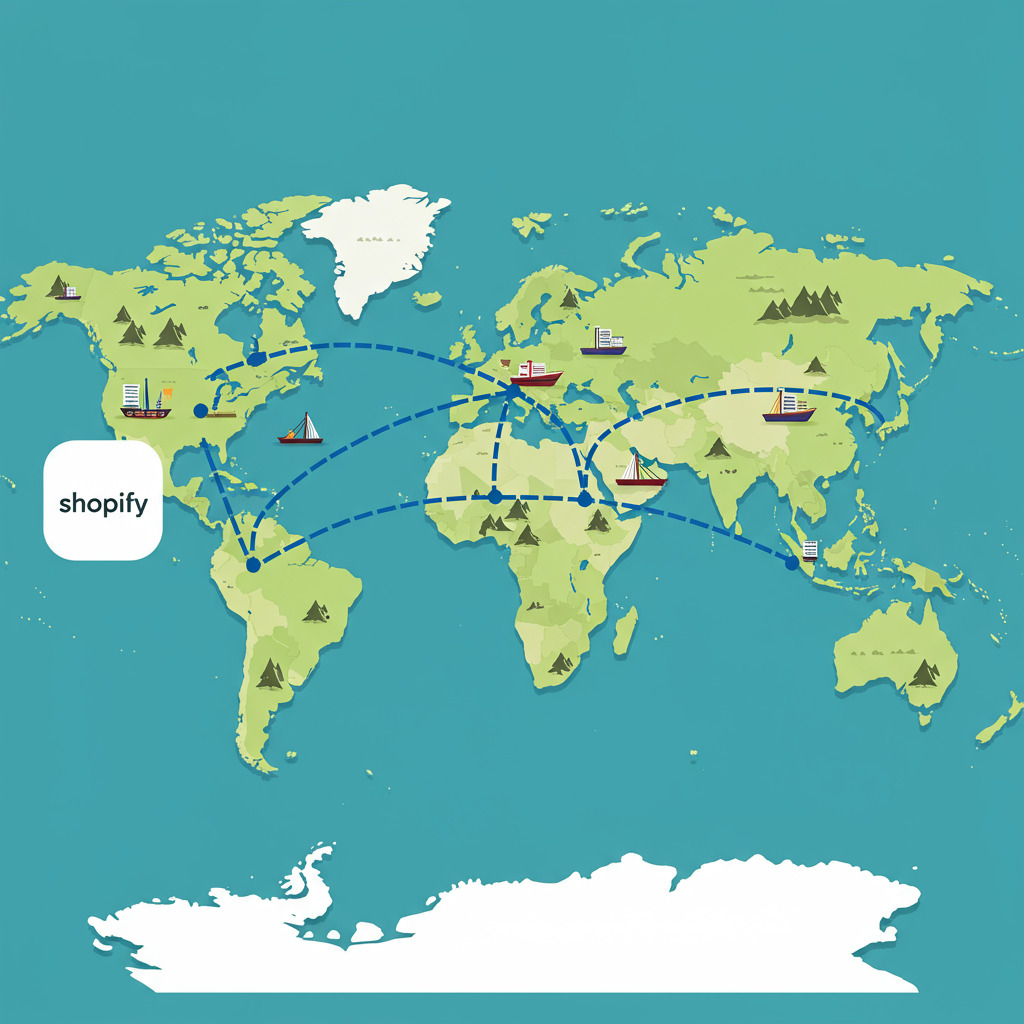Unlocking Global Markets for Your E-commerce Business
Hello fellow Shopify merchants!
Expanding your business globally is one of the most exciting growth opportunities available today.
The thought of international shipping, however, can often feel like navigating a complex maze.
I’ve been there, and I understand the challenges.
But trust me, with a well-thought-out strategy, it’s entirely manageable and incredibly rewarding.
My goal with this article is to demystify international shipping for your Shopify store.
I want to share the insights and best practices I’ve gathered to help you build a robust, efficient, and customer-friendly international shipping strategy.
Let’s dive into the core pillars.
First and foremost, before you even think about shipping, you need to identify your target markets.
Where is the demand for your products strongest? Which countries align with your brand values?
Researching import regulations and restrictions for your specific products in those countries is absolutely critical.
Are there any cultural nuances or consumer preferences you should be aware of?
This initial homework will save you a lot of headaches down the line.
Choosing the right shipping carrier is a pivotal decision.
You’ll find major players like DHL, FedEx, and UPS offer comprehensive international services.
Don’t overlook national postal services, which can be cost-effective for lighter, less time-sensitive shipments.
I always recommend comparing their rates, transit times, and reliability for your target destinations.
Some carriers specialize in certain regions or offer better rates for specific types of goods.
Negotiating rates, especially if you anticipate higher volumes, can significantly impact your bottom line.
Next, let’s talk about how you’ll charge your customers for shipping.
Calculated shipping rates, often integrated directly through Shopify or third-party apps, are usually the most accurate.
They ensure customers pay the actual cost based on their location, package weight, and dimensions.
Flat rates can work for specific product categories or if you have a very consistent product line.
Offering free international shipping is a powerful incentive, but remember to factor those costs into your product pricing.
Tiered rates, based on order value or quantity, can also be an effective strategy.
Transparency in your shipping costs is paramount for building customer trust.
Customs and duties are often the most intimidating aspect of international shipping.
You need to understand the difference between DDU (Delivery Duty Unpaid) and DDP (Delivery Duty Paid).
With DDU, the customer is responsible for paying duties and taxes upon arrival, which can lead to unexpected fees and a poor customer experience.
I strongly advocate for DDP whenever possible, where you collect duties and taxes upfront.
This provides a seamless experience for your customer, with no surprise charges.
Utilizing Harmonized System (HS) codes is essential; these global codes classify your products and determine the applicable duty rates.
Shopify apps can assist with duty calculation and collection, simplifying this complex process.
Always include accurate commercial invoices with your shipments.
International packages endure a lot of handling, so investing in durable, protective packaging is non-negotiable.
Ensure your items are well-cushioned and secure to prevent damage.
Proper labeling is equally important, including all necessary customs forms, accurate recipient and sender information, and clear barcodes.
Planning for international returns and exchanges is another critical, yet often overlooked, aspect.
Clearly state your return policy on your website, outlining who is responsible for return shipping costs and how duties are handled on returned items.
For low-value items, I’ve found that sometimes offering a refund without requiring a return can be more cost-effective than processing an international return.
Shopify offers robust features to help manage international shipping.
Utilize shipping profiles to set different rates for various regions or product types.
Explore powerful third-party apps like Easyship or ShipStation; they integrate with multiple carriers, automate label generation, and streamline customs documentation.
Automating as much of your shipping process as possible will save you immense time and reduce errors.
Finally, effective customer communication is key to a positive international shipping experience.
Provide clear shipping estimates at checkout and keep customers updated on their order status.
Be transparent about potential customs delays and always provide tracking numbers promptly.
Managing expectations effectively builds trust and reduces customer service inquiries.
Your international shipping strategy isn’t a set-it-and-forget-it task.
Continuously monitor your shipping costs, transit times, and customer feedback.
Look for opportunities to optimize packaging, explore new carrier options, and stay updated on international trade regulations.
This iterative process ensures your strategy remains efficient and competitive.
Venturing into international markets with your Shopify store is a journey that requires careful planning and execution.
But the rewards of reaching a global audience are truly immense.
I sincerely hope this comprehensive guide has provided you with valuable insights and actionable steps.
What do you think about this article? I’m always eager to hear your thoughts and experiences.
Now, go forth and conquer those new global markets!






